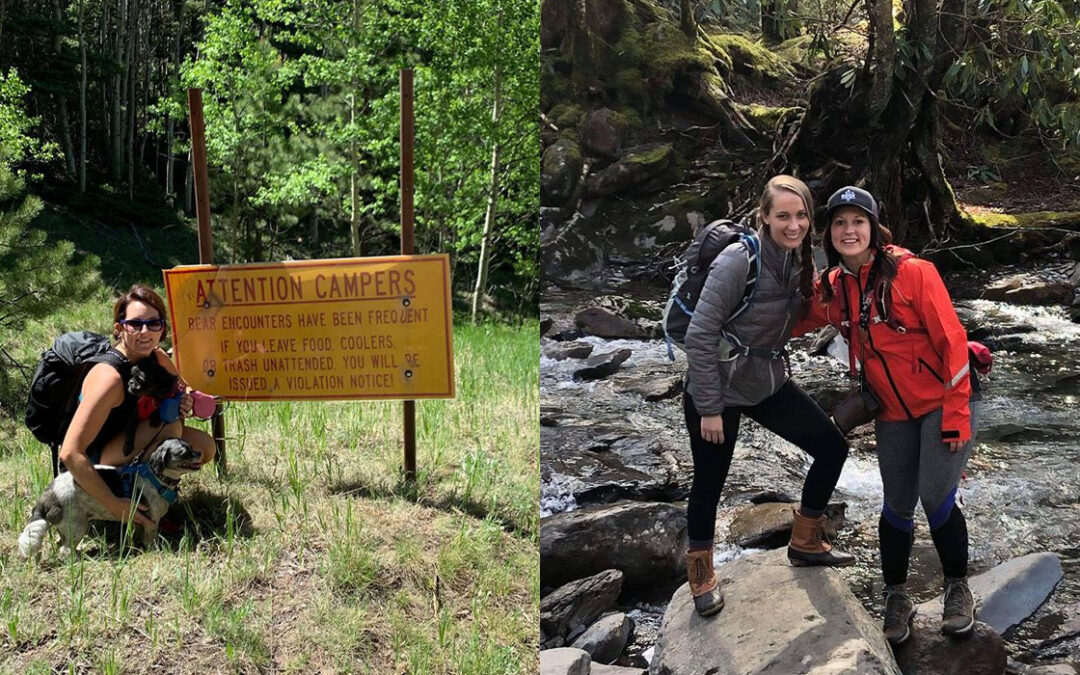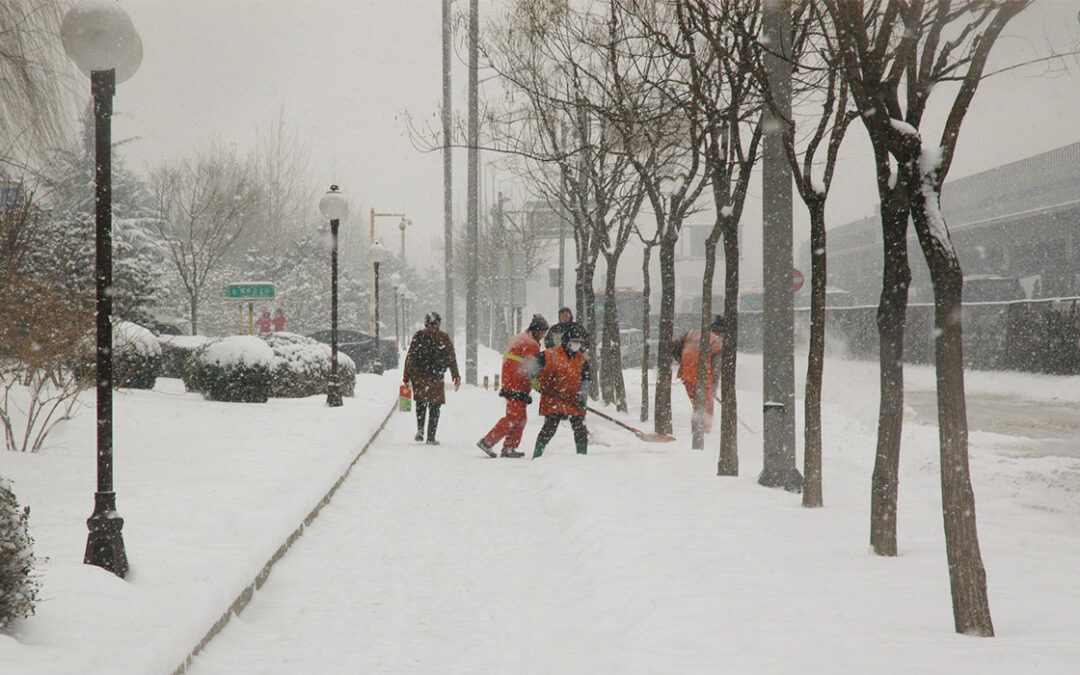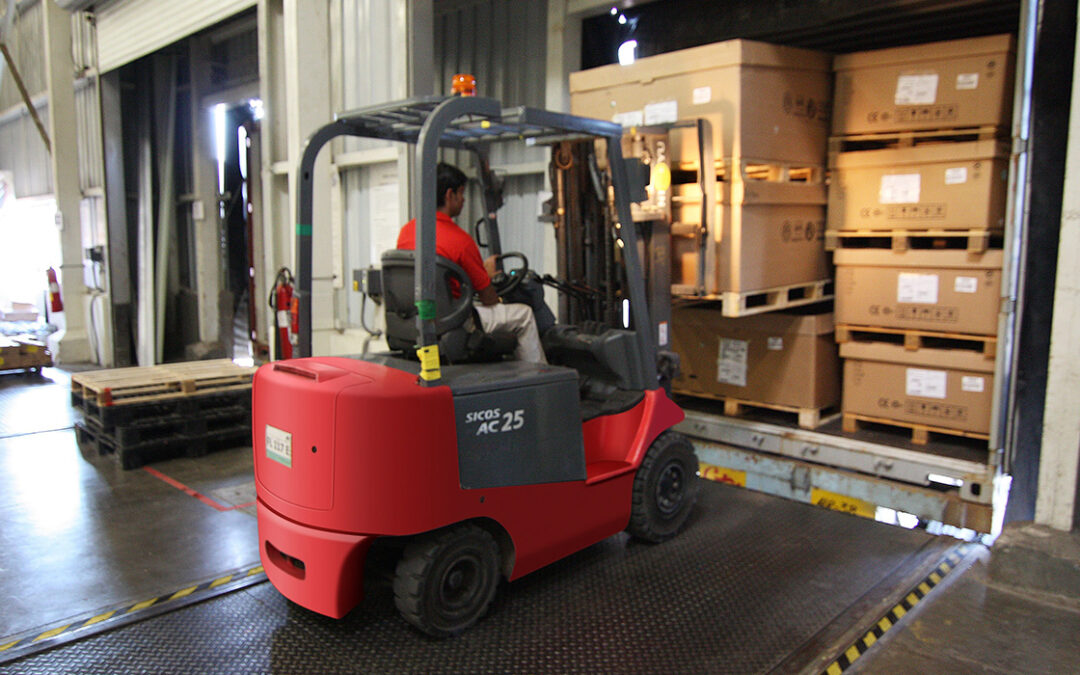
by Jennifer O'Connell | Jan 28, 2020 | Auto Accident, Bicycle Accident, Brain Injury, Bus Accident, CO Truck, Colorado, DUI, Kentucky, Motorcycle Accident, Pedestrian Accident, Personal Injury, Tennessee, Train Accident, Trucking Accident, Workers' Compensation
Jennifer O’Connell
Our goals for 2020 include helping you get to know us a little better. To aid in that venture, we are starting a video series to share a bit more about who we are and help you learn more about who you are working with. Our first video features Managing Partner Jennifer K. O’Connell. Jennifer grew up in Tennessee. Her father was a forester and her mother was a public school special education teacher. She and her sister regularly rode out to the woods with their dad or adventuring among the trees behind their family home, their two Springer Spaniels in tow. The whole family took regular camping trips to state and national parks across the country. If you could not see it in a tent, the O’Connell’s were not interested. They saw snow at the Grand Canyon in June and counted buffalo sightings at Yellowstone in February. More than one of those trips was here to the Rocky Mountains. In fact, Jennifer’s parents began visiting the mountains shortly after they were married. Colorado holds a special place in her family. Jennifer also loves her home state of Tennessee. While the mountains of Appalachia have a bit more oxygen at the top, hiking was still a big part of Tennessee life for her and her family. While the summit of Mount Le Conte is only 6,593 feet, there is a 2,763 foot climb to the top and there is often quite a bit of ice at the top.
Click here to learn more about Jennifer and keep an eye out for the next episode to learn more about her team! Hope you enjoy getting to know us!

by Jennifer O'Connell | Jan 21, 2020 | Auto Accident, Bicycle Accident, Brain Injury, Bus Accident, CO Truck, Colorado, DUI, Kentucky, Motorcycle Accident, Pedestrian Accident, Personal Injury, Tennessee, Train Accident, Trucking Accident, Workers' Compensation
Queener Law Featured in VoyageDenver
We are thrilled to see Queener Law featured in VoyageDenver! What an honor!
We love their insightful questions that prompt us to think a bit more about how we got here and why we have made the choices we made along the way. The life of a business owner is full of forks in the road and choices. It is always important to look back and evaluate the road already traveled to help make the right decisions for the one ahead. We are also extremely happy that our client-centric focus came through. We purposefully keep out hometown feel and insist that our clients speak to a partner every time. We want to make sure our clients know how important they are and how dedicated we are to their cases. It was very exciting to hear that the editors wanted to see Queener Law featured in VoyageDenver to give us a chance to share that view with the community.
Check out the feature here!
Call us any time for a free consultation or to refer your friends or family members in need of help. No more being tossed around from attorney to attorney or case manager to case manager. At Queener Law, you will be in the capable hands of a partner and paralegals from start to finish. Your case deserves undivided attention, and so do you.
by Jennifer O'Connell | Dec 9, 2019 | Auto Accident, Bicycle Accident, Brain Injury, Bus Accident, CO Truck, Colorado, DUI, Kentucky, Motorcycle Accident, Pedestrian Accident, Personal Injury, Tennessee, Train Accident, Trucking Accident, Workers' Compensation
Getting Your Medical Bills Paid the Right Way
“The insurance company said they’d pay all my medical bills. Now they only want to pay a fraction of what I owe!’ We have heard this complaint almost daily in our decades of practice. What’s the reason and who’s the culprit? Of course, every story like this begins with the fact that car insurance companies are designed to collect premiums and not pay out. But that is not the only conspiracy happening here. Hospitals and medical providers have found ways to use the car insurance system to increase profits, as well. In a recent article in The New York Times, the master plan of hospital billing is broken down into the following steps:
1. Medical Swag
When you are in a wreck, the first thing the EMS or ER staff will do is slap on that age-old neck brace. Often, that neck brace either came free as medical sales swag or was bought in bulk at a rate of a few bucks each. When you get your medical bills in the mail, you find out that your insurance paid $100-plus and you owe an additional $20 bucks or so after insurance. You could get the same brace at your local pharmacy for much less. But when your chart is flagged for a car accident, out comes the medical swag. And in the end, all of this gets paid by the car insurance company… out of your settlement.
2. The Cover Charge
When you are taken to the emergency room, you get a bill. That we know. But did you know that this bill is just for use of the room? In essence, that bill is a “cover charge” for entry. In addition to that fee, which may vary depending on how emergent or traumatic your injury may be, there is a separate fee for every material used and every person who walks into the room. In many cases, you’ll even get a completely separate bill just for the use of a doctor, a necessary component of your emergency room visit. This bill, again, may vary based on what the hospital determines is the severity of your injury. Two guesses what they label car accident victims as in order to increase their bill.
3. Impostor Billing
Not only can you get billed for every person who walks in the room, but you may also receive a bill for people who you have never met. Medical billing allows for “consult billing,” even when the physician never consulted with the patient themselves. If a radiologist simply stops an orthopedist in the hallway for a second look at your x-rays, you get billed. These are not common charges, but we see them often in cases like auto accidents where the hospital anticipates deep pockets.
4. The Drive-By
In more serious cases, where post-ER treatment is required, you can get billed even before your first visit. For instance, if your injury requires physical therapy, a therapist can enter the room just to discuss your future therapy visits, and you will receive a bill for that conversation. A full assessment or actual therapeutic treatment is not required for the hospital to bill for it.
5. Avectus
We have added this prong because it is so prevalent and crushing to your in-pocket compensation while filling the hospital’s bank account. Hospitals allow representatives from Avectus or other lien companies to enter patients’ rooms, although they have no medical training or degrees and have not received consent from the patient or relatives. Their only purpose is to have medicated and shocked accident victims sign forms promising to pay the hospital’s bill in its entirety, regardless of whether they have health insurance. Why? Because the hospital does not want to take the contractual discount with the health insurance, and instead wants to take as much as possible from the auto insurance policy, in addition to all of your other medical bills.
The End Game
Why do we care so much about what the hospital is doing if the car insurance company is paying in the end? Why should you care about what money goes where? An auto insurance policy is like a bank account. Everything that comes out of it – including medical bills – reduces the amount in the account. In other words, every penny the hospital takes is one less for you. If your hospital bill is inflated simply because you were in an auto accident, your compensation for the injuries you sustained will go to the hospital rather than to you. If the auto policy available is only $50,000 and your hospital bill is $40,000, there is very little money left to pay remaining bills, reimburse your lost wages, or cover your future medical needs. And that’s if you don’t come out with a $75,000 bill and only $50,000 in automobile insurance. What can be done to stop this? Short of changing legislation, simply put, you need an attorney. Our office has decades of experience forcing hospitals to use health insurance and refusing to pay their liens if they are on notice and ignore us. We not only fight the insurance company on your behalf, but we also hold the hospitals to a high ethical and economical standard, refusing to let them dig into the policy that was meant to compensate you. Be aware and proactive with your health and your future. Work with a firm that has no blind side. We see the attacks coming, and will head them off at the start.

by Jennifer O'Connell | Dec 14, 2018 | Colorado, Workers' Compensation
Winter Weather Work Hazards
During the winter months in Colorado, new hazards are introduced to both indoor and outdoor workplaces that necessitate precautions on the part of both employees and employers. Outdoor workers may face hazards involved with winter driving, removing snow from roofs, exposure, and dangers from using powered equipment. Indoor workers are not immune from winter weather hazards. They might slip and fall on pooled water from snow and ice that have been tracked inside from outdoors. Understanding the hazards can help employees and employers to reduce the risks of injury from weather-related hazards.
Outdoor Hazards
Workers who must work outside must guard against numerous hazards. If they regularly work outside, they should guard against exposure-related injuries. Employers should make certain that outdoor employees have access to warming stations and are able to take brakes to warm themselves. The employees should also wear appropriate work clothing, including coats, gloves, hats, and face masks to provide them with further protection from the cold.
Workers who must drive in winter weather conditions should take precautions. When they are driving on snow- and ice-covered roads, they should use tire chains when required and be provided with appropriate training on winter driving. All workers should have emergency kits available in their vehicles that include such things as warming blankets, flares, two-way radios, scrapers, flashlights, batteries, and first aid kits. They should also make certain to have a supply of emergency food and water in case that they become stranded. Other hazards that workers and employers should be aware of include working from heights to remove snow and ice accumulations, working with or near winter power tools such as snowblowers and chainsaws, and working near downed power lines.
Indoor Hazards
Workers whose jobs are largely indoors are not immune to hazards from winter weather while they are at work. Workers may slip and fall if snow and ice are tracked in on the workers’ shoes or the shoes of customers and other visitors. Employers should make certain to have mats located at the entryways to businesses and to keep the sidewalks leading to the entrances clear of ice and snow. Employers may also want to have flooring with good grip installed to prevent slips and falls. Workers might want to opt for shoes that have a good grip to lessen their chances of suffering fall injuries at work.

by Jennifer O'Connell | Nov 19, 2018 | Colorado, Workers' Compensation
Colorado’s Workers’ Compensation Laws
There were a number of changes to the Colorado workers’ compensation system in 2018, and some planned changes to the Division Independent Medical Exam program in 2019 may impact the workers’ compensation claims of people who suffered disabling injuries. Beginning on Jan. 1, 2019, either side may request an independent DIME if there is a dispute about whether the worker has reached his or her maximum medical improvement. When there is a dispute about reaching MMI, the parties will be required to submit to the DIME process before they can litigate their dispute before an administrative law judge.
What Is MMI?
MMI refers to “Maximum Medical Improvement.” In the context of workers’ compensation, reaching MMI means that people have reached their maximal levels of improvement from injuries and all of the treatment options have been exhausted. In the past, workers who had a dispute with the insurers about whether they had reached their MMIs could litigate the issues. The changes in the law now require that workers and insurers go through the DIME program when there is a dispute before they will be allowed to litigate the matter in court.
Potential Effects of the DIME Rule Changes
There are several potential impacts of the DIME rule changes on workers. If an insurance company’s independent medical examiner has determined that the workers have reached their MMIs in contradiction to the workers’ own treating physicians, the workers will not be able to directly challenge the insurance company’s IME in court. Instead, either side may request a DIME physician, or both sides can agree to a DIME physician. The requesting party must pay for the DIME doctor’s fee, which can range from $1,000 to $2,000 for an initial DIME. Followup DIMES incur additional fees.
Workers can apply to be found to be indigent if they are unable to afford the fees. One potential issue of the new rule is that the workers may be forced to wait for long periods to litigate their disputes about MMI. Since the DIME doctors are not the treating physicians of the workers, they may not have as great of an understanding of the workers’ functional abilities and limitations. Finally, administrative law judges may give greater weight to the findings of DIME doctors than to the testimony of treating physicians at hearings.

by Jennifer O'Connell | Nov 13, 2018 | Colorado, Workers' Compensation
How Colorado Workers Get Injured
A number of factors can lead to worker injuries in Colorado, and certain industries, groups of workers, and even times of the day have much higher injury risks. Workers in the trade, transportation, and utility sector, employees who are newer to their jobs, and those who are older than age 45 are more prone to injuries. There is also an increased risk of injury that happens in the hours before lunch and again in the late afternoon hours.
Groups With Higher Injury Risks
Certain workers and industries carry greater risks of injuries, and those that can happen are specific to the types of jobs. For example, people who work in transportation and warehousing or in public administration, as well as those who are 45 or older with work-related injuries to their spines or upper extremities, make up more than one-third of the claims for lost time at work that are made each year to the Colorado Department of Labor and Employment. Back strains are common injuries for people who work in the construction industry as well as for clerical and professional workers. Health care workers have a higher risk of contracting illnesses from their patients, and hospitality workers have higher risks of suffering cuts to their fingers and hands.
Factors Leading to Injuries
There are several factors that lead to an increased injury risk. More workers suffer injuries during the hours leading up to lunchtime and again in the late afternoon hours. Researchers claim that this heightened risk is caused by workers not eating correctly or hydrating enough, leading to metabolic changes. Another factor that contributes to many accidents is the inexperience of workers. Workers who are new to their jobs have a much greater risk of having accidents at work. Workers in the hospitality industry have a 35 percent increased risk of injury during their first six months on the job. Professional and administrative workers have a 30 percent greater risk of injury during their first year at work.
When workers in Colorado are injured on the job, they can file workers’ compensation claims to recover money for medical expenses, lost wages, and more. In some cases, workers may also be entitled to compensation from third parties like equipment manufacturers, contractors, or other parties who caused their injuries.





